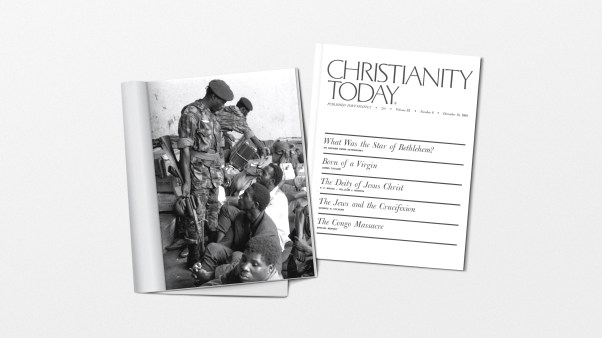How many churches do you know that are suffering from senility? If you have moved about and have had your eyes open, you have probably seen at least one church whose energy was sapped by members who were unwilling to learn new ways and to support good ways. Thus its grip on both the present and the future was seriously weakened.
Many churches seem to ignore the fact that they are living organisms. They grow up and age. Vitality and virility may characterize them, or senility and sluggishness. If we who are a part of a church want it to stay alert and healthy and strong, we must work for continual renewal. One step might be to have an annual check-up, to see whether we are getting stiff and weak and slowed down by a hardening of the spiritual arteries.
Historically, the free churches have been the first in religious and educational and social inventing and innovating. Some of the consequences of this are the church school, free public education, and the first American colleges and universities. But does previous strength and vitality guarantee present good health? Of course not. Nor does a good heritage insure a productive future. Our churches cannot afford to lounge comfortably. We must come to grips with the processes by which we function, and the leadership that is necessary, and the faith that supports our very existence.
Are we ready for change and renewal and continuous responsiveness? Can we get at our problems? Do we care about our vitality? Will we use and develop our resources? Verbal assent to the values that undergird our enterprise as the Church of Jesus Christ is good, but can we make these values live? Each local church must answer such questions.
What characteristics are likely to be found in a church that is ready for renewal? First, it should have strong and varied leadership, the privilege of free choice, and initiative on the part of its members. It should be committed to govern itself and yet be cooperative. It cannot afford to depend on the denomination for motivation and initiative.
The majority of the organizations in our land seem to be driving in the opposite direction. This is the age of conglomerates, and many organizations are speeding toward merger. Socialism is almost a holy word to some. Evidently some of the churches thought they were being left out. Since large-scale organization seems to be answering the threat to survival as well as fulfilling the quest for power, why not do it in religion? So we see and hear of the acceleration of church mergers. Some of this must undoubtedly be for the good. But is eliminating autonomy and increasing power systems going to lubricate stiff joints and loosen rigid minds? Is larger bureaucracy the correct prescription? The road to church union is something like an Interstate Highway. It is wide and smooth and well marked. But that does not mean it will take us in the proper direction.
One of the aspects of the United States that helped make it great is pluralism. People of vastly different political, social, economic and religious persuasions have been welcome to live in the same country, the same state, and the same city, attend the same schools, shop the same stores. Variety. A multiplicity of alternatives. These are good.
We should think twice and again before we follow what appear to be the signs of the times to more centralized, more comprehensive control. I do not say that we should reject all moves in that direction—only that we should be very careful. Where do the large denominational budgets and programs get their fuel to operate? From the individuals in local churches who give their talent and time and treasure. In a larger system with more centralized control, we would gain efficiency and lose individuality (or autonomy).
Both the New Testament and the Old Testament teach the importance of the individual. Stories are recorded showing that one person can throw a whole situation out of kilter. The New Testament teaches that one person, no matter his status in life, is just as important as any other person. One church is just as important as any other church.
What about leadership? Capability for renewal and growth means that our lay leadership must be strong and varied. We cannot decry as lowly the vital opportunity of inculcating religious and moral values to our children in church school. We cannot assume that this educational venture will succeed without our commitment. Nor can we assume that moral and ethical instruction of our adults is not necessary. Lifelong education will help us stay out of embarrassing ruts—or at least keep the rut we’re in from getting too deep.
The health and welfare of a church depends on individual participation. We use imagination and initiative in other areas of responsibility, such as civic organizations and service clubs. Can we put to work in the church that same imagination and initiative? What happens in any local church is determined by its members. If nothing happens, we have only ourselves to criticize.
Do we want a church that is pulsing with life? Then we must give due consideration to some searching questions. The most basic is: Why do we exist? Once we answer that, we must ask: Are we responsive to this purpose? Do we provide each member opportunities for commitment? Do we have the will to do whatever is necessary to be the best we can be?
Let us not forget the values that form the roadbed for our journey as a church—such values as love, truth, justice, brotherhood. If our church is to be healthy, then our faith must be one of action even more than of words. If we believe in love and justice and the worth of the individual, it must be seen in how we sell our homes, treat our acquaintances, act toward our neighbors. The values of which we so freely speak must be given the breath of life in our homes and businesses as well as in our church.
What kind of church do we want? The choice is ours. Our verbal answer goes to a world that will not listen. The real answer is seen in what we do.
—The REV. JOHN J. DRAG,
First Congregational Church, Terre Haute, Indiana.










